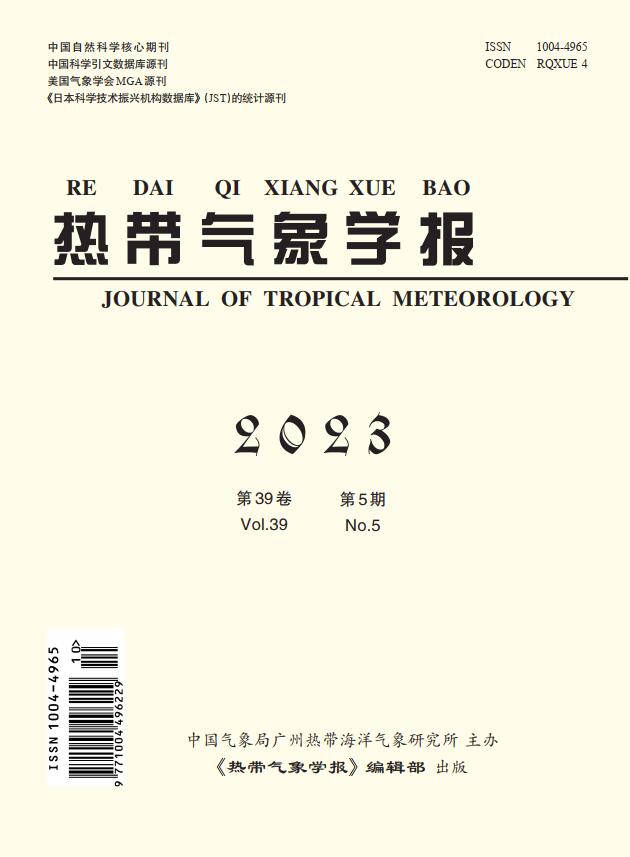Reliability of X-band Dual-polarization Phased Array Radars Through Comparison with an S-band Dual-polarization Doppler Radar
IF 1.4
4区 地球科学
Q4 METEOROLOGY & ATMOSPHERIC SCIENCES
引用次数: 1
Abstract
: Based on the observations of a squall line on 11 May 2020 and stratiform precipitation on 6 June 2020 from two X-band dual-polarization phased array weather radars (DP-PAWRs) and an S-band dual-polarization Doppler weather radar (CINRAD/SA-D), the data reliability of DP-PAWR and its ability to detect the fine structures of mesoscale weather systems were assessed. After location matching, the observations of DP-PAWR and CINRAD / SA-D were compared in terms of reflectivity ( Z H ), radial velocity ( V ), differential reflectivity ( Z DR ), and specific differential phase ( K DP ). The results showed that: (1) DP-PAWR has better ability to detect mesoscale weather systems than CINRAD/SA-D; the multi-elevation-angles scanning of the RHI mode enables DP-PAWR to obtain a wider detection range in the vertical direction. (2) DP-PAWR ’ s Z H and V structures are acceptable, while its sensitivity is worse than that of CINRAD/SA-D. The Z H suffers from attenuation and the Z H area distribution is distorted around strong rainfall regions. (3) DP-PAWR ’ s Z DR is close to a normal distribution but slightly smaller than that of CINRAD/SA-D. The K DP products of DP-PAWR have much higher sensitivity, showing a better indication of precipitation. (4) DP-PAWR is capable of revealing a detailed and complete structure of the evolution of the whole storm and the characteristics of particle phase variations during the process of triggering and enhancement of a small cell in the front of a squall line, as well as the merging of the cell with the squall line, which cannot be observed by CINRAD/SA-D. With its fast volume scan feature and dual-polarization detection capability, DP-PAWR shows great potential in further understanding the development and evolution mechanisms of meso-γ-scale and microscale weather systems.x波段双极化相控阵雷达与s波段双极化多普勒雷达的可靠性比较
基于两台x波段双极化相控阵天气雷达(DP-PAWRs)和一台s波段双极化多普勒天气雷达(CINRAD/SA-D)对2020年5月11日飑线和2020年6月6日层状降水的观测,评估了dp - pawrr的数据可靠性及其对中尺度天气系统精细结构的探测能力。定位匹配后,比较DP- pawr和CINRAD / SA-D的反射率(Z H)、径向速度(V)、差反射率(Z DR)和比差相位(K DP)。结果表明:(1)DP-PAWR对中尺度天气系统的探测能力优于CINRAD/SA-D;RHI模式的多俯仰角扫描使DP-PAWR在垂直方向上获得更大的探测范围。(2) DP-PAWR的Z、H、V结构可以接受,但灵敏度低于CINRAD/SA-D。在强降雨区附近,Z - H衰减,Z - H面积分布扭曲。(3) DP-PAWR的Z DR接近正态分布,但略小于CINRAD/SA-D。DP- pawr的kdp产物具有较高的灵敏度,对降水的指示性较好。(4) DP-PAWR能够详细完整地揭示整个风暴的演变结构和飑线前部小单体的触发、增强以及与飑线合并过程中的粒子相位变化特征,这是CINRAD/SA-D无法观测到的。DP-PAWR具有快速的体积扫描特性和双极化探测能力,在进一步了解中γ尺度和微尺度天气系统的发展演变机制方面具有很大的潜力。
本文章由计算机程序翻译,如有差异,请以英文原文为准。
求助全文
约1分钟内获得全文
求助全文
来源期刊

热带气象学报
METEOROLOGY & ATMOSPHERIC SCIENCES-
CiteScore
1.80
自引率
8.30%
发文量
2793
审稿时长
6-12 weeks
期刊介绍:
Information not localized
 求助内容:
求助内容: 应助结果提醒方式:
应助结果提醒方式:


